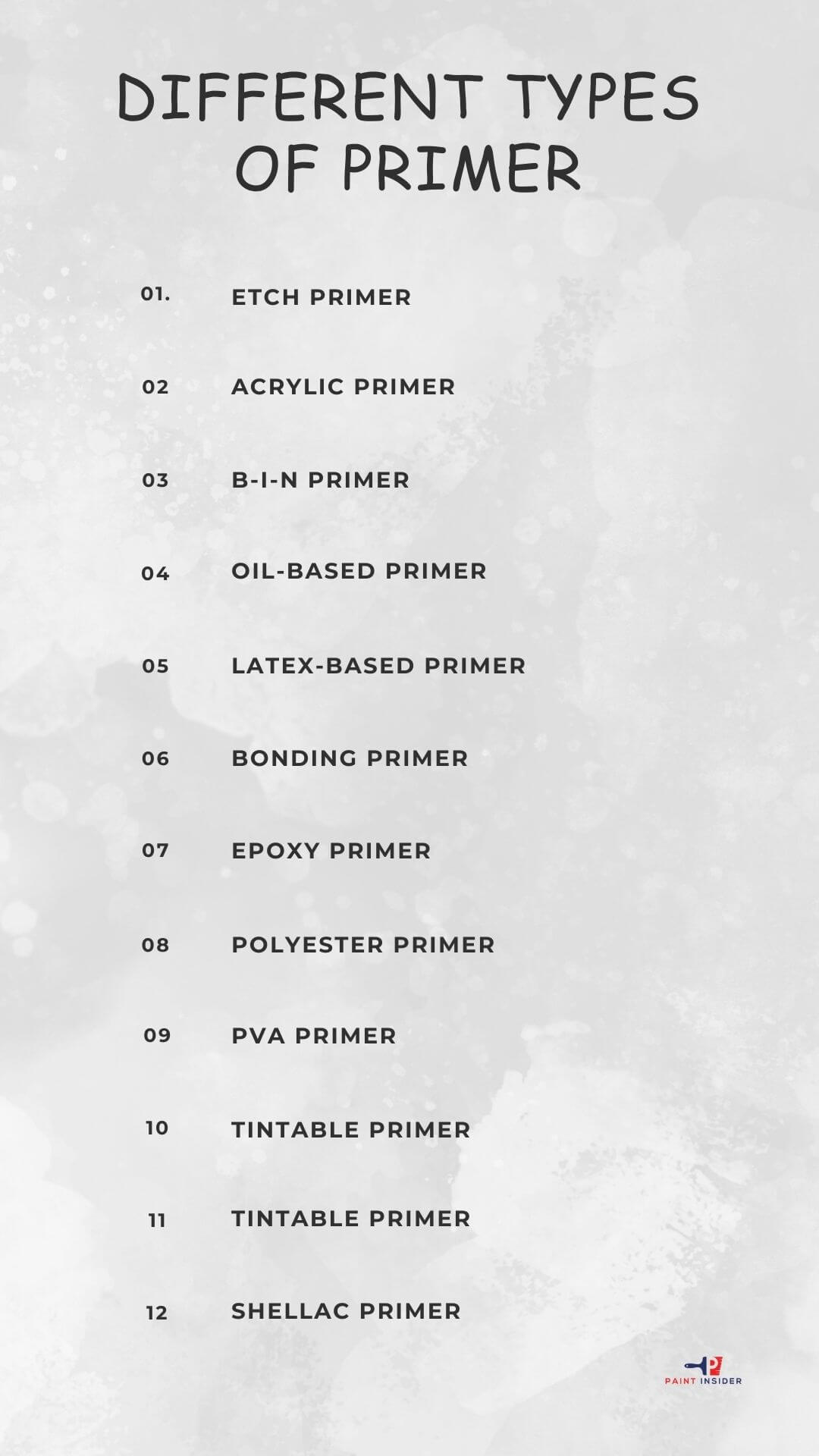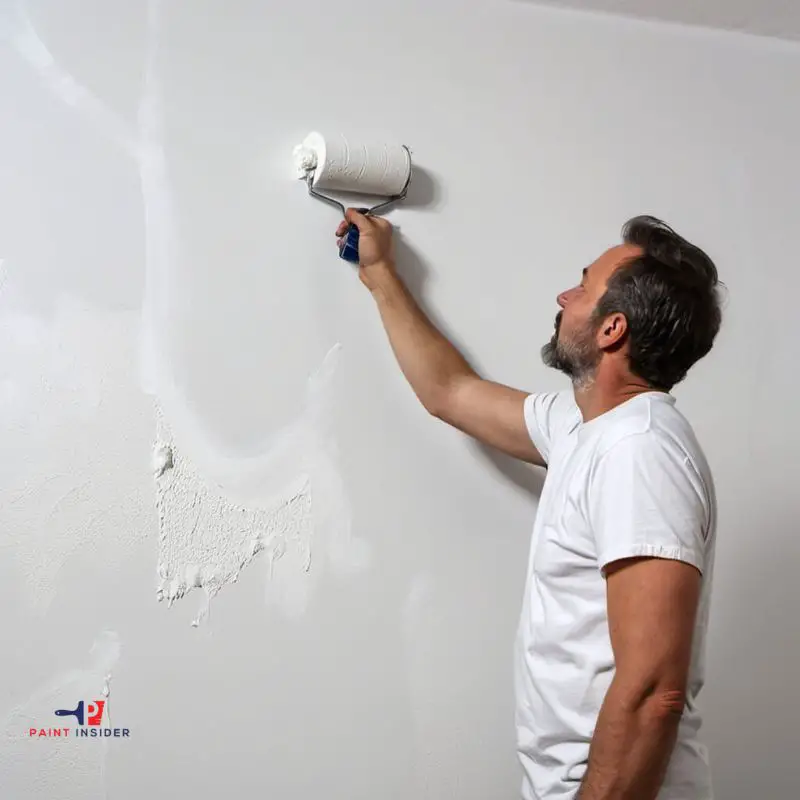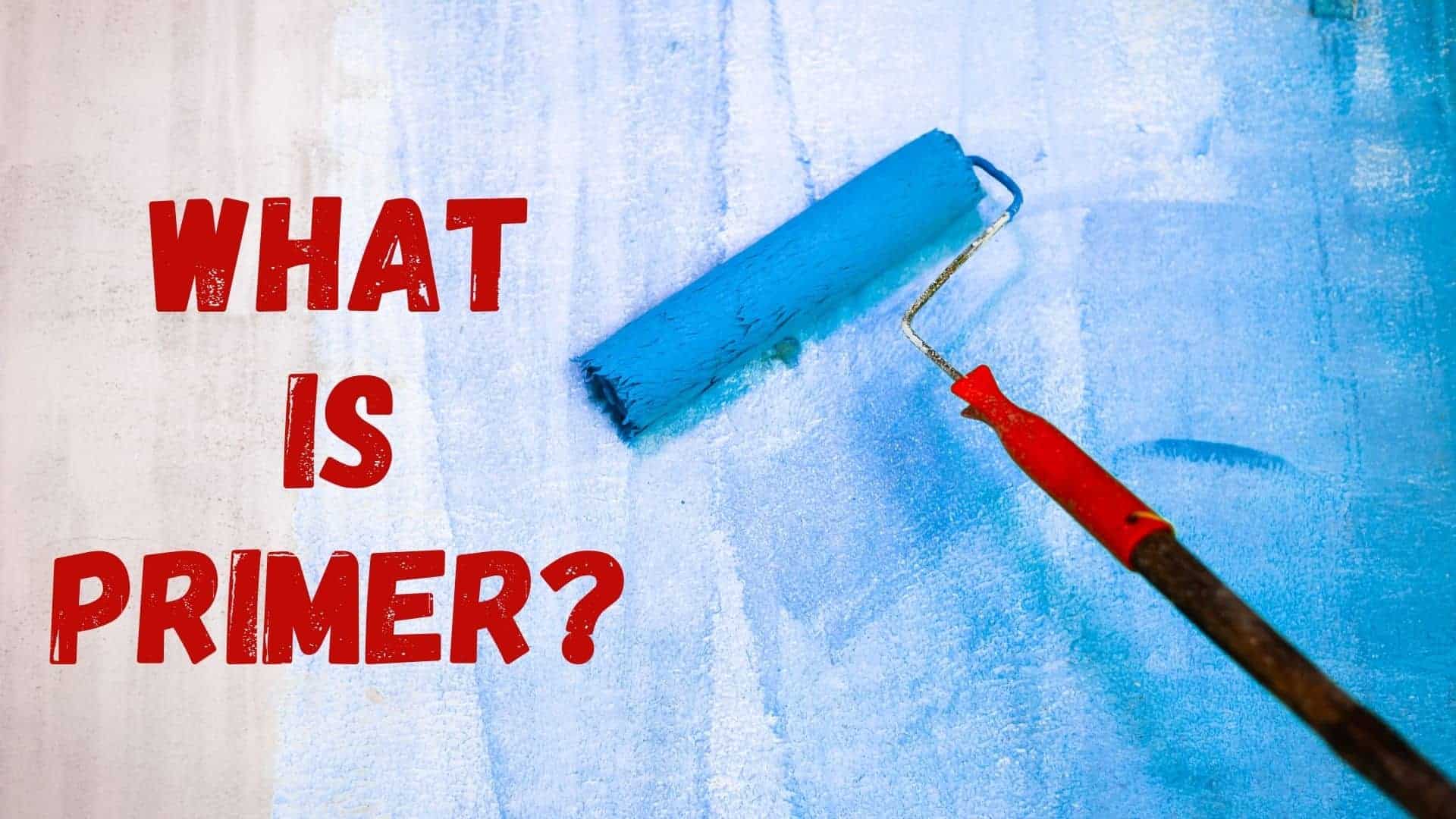In a simple word, Paint primer is a preparatory coating applied to surfaces before painting to improve adhesion, provide a uniform surface for paint application, and enhance durability. But there are lots of things to know about paint primer.
Primer prevents the appearance of any odor or stain on the surface. So, everybody should know what is paint primer. There are three primary explanations behind priming a surface. It gives a solid grip that goes about as a paste between the material and paint. It is an additional layer between the material and the paint. This permits the completion of paint with better strength and insurance on the material.
The primer contains resinous substances that permit them to give a compound connection between the paint and the surface material.
Is there any need for Primer?
Preparing may appear to be pointless and a misuse of cash and time where you are fundamentally multiplying your remaining task at hand for almost no advantages. Be that as it may, preparing is crucial for arrangement and planning is critical to painting. All in all, when can we say whether priming the surface is needed?
It is needed to be applied when:
- Painting on a fresh surface
- Painting over a hazier tone
- Painting over metal or plastic
You don’t have to apply it when:
- The new paint coordinates the current one
- Using self-preparing paint
- Walls are fit as a fiddle
Different Types of Primer

Etch Primer
Etch Primer is a paint that is intended to genuinely attach itself to the substrate to which it is applied.
This is accomplished by consolidating a corrosive with the paint so the corrosive minutely scratches the outside of the substrate, subsequently shaping a physical and compound connection between the two.
By and large, the pigment will be added to the Etch Primer with the goal that it very well may be seen.
Acrylic Primer
Acrylics have become amazingly adaptable and efficient.
They are by and large simple to utilize dries rapidly and stay adaptable for longer timeframes. They oppose breaking, stripping, and rankling and offer simple tidying up with cleanser and water. The best primers utilize 100% acrylic saps and will be costly.
B-I-N Primer
B-I-N is a definitive sealer and stain executioner. It offers unrivaled attachment on any surface without sanding and has the concealing ability to hide the hardest of stains. At all times, it blocks odor (from dust and fire damage to the smell of nicotine and pets). Also, dries in minutes.
Oil-Based Primer
Oil-based primers are exceptionally flexible because they function admirably with both latex and oil paints and can be applied to countless surfaces. The most well-known of everything is wood and lumber (inside, outside, exposed, completed, painted, and unpainted). This is because oil-based can seal the permeable surface of the wood and furnish the paint with a superior surface to cover up.
You can also check the Best spray paint for wood as most of the time it doesn’t require any primer.
Shellac Primer
It is not just about as flexible as an oil-based groundwork. They function admirably to seal in scents and smell from stained surfaces since they are made of denatured liquor. Surfaces, for example, smoke-harmed dividers or serious water that requires the smell or stain to be fixed can be viably done as such by utilizing shellac primer. They likewise work on materials, for example, wood, mortar, plastic, and metal.
Latex-based Primer
Latex-based Primer is water-based and is famous for preparing incomplete drywall since it works effectively at streamlining the surface for painting. They rush to dry. Since they rush they likewise grow and contract alongside the wood at different temperatures. Latex-based Primer additionally performs well with delicate wood and cement.
Bonding Primer
A few surfaces are particularly “smooth” and represent a special test for even the best primers when attempting to get a covering to adhere to them. A few models would be clay tile, coated square, plastic, vinyl screens, and surface with a serious shine finish.
If you pick the right holding introduction for your application, you will make certain to get an incredible attachment of your completion coat to the surface.
Epoxy Primer
Epoxy alludes to a sealer that is a non-permeable completion. It is fundamentally suggested as the respectable initiating coat over uncovered steel. Epoxy primer offers incredible grip to metals, yet additionally, fills in as an appropriate base for additional undercoat items and top paint. The capacity of an epoxy primer to oppose erosion is identified by its thickness; the thicker the epoxy primer layer, the better the assurance.
Polyester Primer
Polyester Primer is a high-form, quick-drying with a fantastic bond to electrified metal, aluminum, fiberglass, and body filler. Polyester Primer has astounding filling features and is sanded either wet or dry.
PVA primer
PVA primer is a latex-based item that seals the pores of the drywall. The primer goes about as adherent so the complete layer of paint will adhere to the surface better. Even though the PVA solidifies, it is still delicate, which permits the completion tone to stand apart more and go on smoothly.
Tintable Primer
A tintable primer is utilized to frame the establishment for a specific tone. Coloring primer is a truly supportive task when you have many individuals in a single house, all attempting to complete two layers without violating one another. The light green first layer of primer is handily covered by the next coat, leaving you with spotless, white, all-around prepared surfaces
Tintable Primer
Urethane Primer is formed to give a quick dry out, a high-form film that has an astounding bond, simple sanding properties, and great shading holdout. It is intended to be utilized on appropriately arranged steel, aluminum, iron, fiberglass, and recently painted surfaces.
Why Use Primer Before Painting?
Using a paint primer is akin to laying a solid foundation before constructing a house. It creates an optimal surface for the paint to adhere, enhancing durability and ensuring that, your color looks vibrant and true. What many forget is that primer does more than just improve adhesion, it can significantly impact the final appearance of your project. For instance, when working with lighter shades over darker surfaces, a good quality primer helps prevent any undertones from bleeding through, making it easier to achieve that crisp finish you desire.

Moreover, consider the cost-effectiveness of using primer. While it might seem like an added expense up front, neglecting this crucial step can lead to uneven coloration or reduced longevity of your topcoat, which often means more frequent repainting down the line ultimately costing you more in labor and materials. Additionally, some primers come equipped with stain-blocking properties that hide imperfections and blemishes on walls or ceilings. This not only saves time but also assures that each stroke of paint reflects your intention without unsightly interruptions. So next time you’re gearing up for a painting project, remember that investing in quality primer might be one of the smartest decisions you make for achieving stunning results.
Qualities of Good Primer
Consider this list before buying paint primers:
Printability
A primer normally comes in white or dark. You can utilize either shading as is without coloring it, or you can have the primer colored to a shade that is marginally lighter than your paint. Tinting primers, which require purchasing a primer named tintable, for the most part, accomplish a more profound, more extravagant, and uniform finishing tone.
Dry Time
Focus on the “dry to recoat” time determined on the primer—a sign of when the primer is adequately dry to be recoated, either with another layer of primer or with paint. When all is said in done, latex primers have a more limited dry-to-recoat period of close to 60 minutes, though oil-based primers need 1 to 3 hours before they can be recoated.
Better Adhesion of Paint
A decent-quality primer improves the grip of the paint so your paint will last longer and look better. It guarantees a uniform final vibe of paint.
Cost vs. Benefit of Using Primer
When considering the cost versus benefit of using paint primer, it’s essential to look beyond mere dollars and cents. Although there may be an initial expense in purchasing primer, the long-term advantages can far outweigh this investment. For instance, a quality paint primer enhances adhesion and durability, ensuring that your topcoat lasts longer without flaking or chipping. This longevity translates into fewer repainting jobs over the years, effectively saving you money and time in the long run.
Additionally, using primer can dramatically improve the final appearance of your painted surface. It creates a consistent base that reduces imperfections from showing through while enhancing color richness. Without primer, you might find yourself applying multiple coats of paint to achieve even coverage wasting both product and labor. In essence, while opting for a primer requires an upfront cost, its ability to enhance longevity and aesthetic appeal positions it as an invaluable asset for any painting project.
Guide to Choosing the Right Primer
Not all primers are made equivalent. To take care of regular issues for painting, pick the best paint primer for the work. On the off chance that your paintwork involves interior and exterior, an indoor/outdoor primer is acceptable to utilize. If something else, utilize separate primers defined for inside or outside. The best inside paint primer to utilize relies upon the material to be painted and what kind of paint you’re utilizing.
Outdoor primers are more long-lasting than indoor ones, so the best outdoor primer to utilize is the one that shields surfaces from buildup and limits breaking and disintegration.
If your wood isn’t tinted, utilize excellent oil or latex-based primer. When you are painting cedar or redwood and your wood is tinted, utilize a color-hindering primer. If your paint is in excellent condition, it may not be required. However, when you have uncovered wood, chalking, or chipped paint, utilize a primer based on oil.
Conclusion: The Value of Paint Primer
In the realm of painting, many homeowners overlook paint primer as a mere formality, yet its value is profound. What is paint primer if not an essential foundation that enhances both the aesthetics and durability of your project? By creating a uniform surface for your topcoat, primer ensures that colors appear truer and more vibrant, amplifying the overall visual appeal. It acts as a barrier that prevents stains from bleeding through while also promoting better adhesion of paints reducing the likelihood of chipping or peeling over time.
Moreover, using paint primer can save you money in the long run. With improved coverage and reduced need for additional coats of paint, you’re not just boosting quality but also efficiency. In areas prone to wear or moisture like kitchens and bathrooms the added protection offered by priming pays dividends by prolonging the life of your finishes. Ultimately, understanding what paint primer can do transforms it from an optional step into an indispensable ally in achieving a professional-looking result that stands up to everyday challenges.

